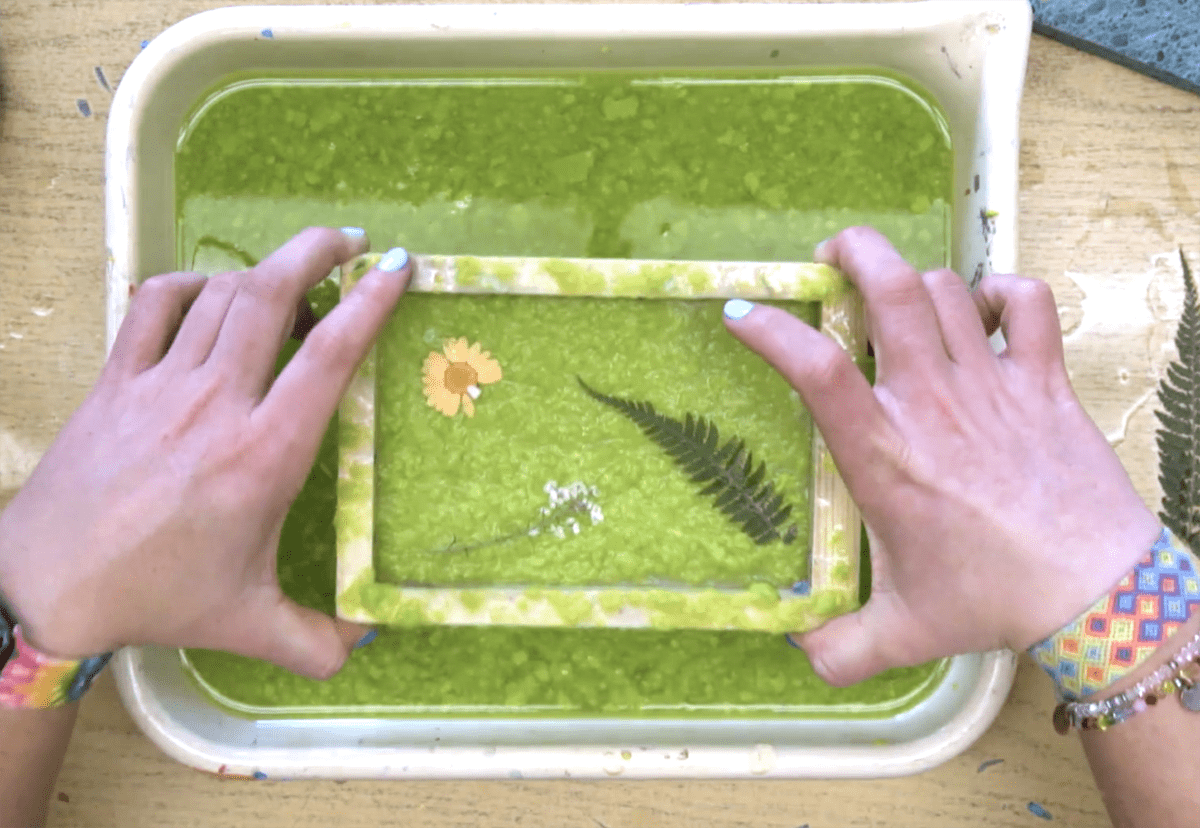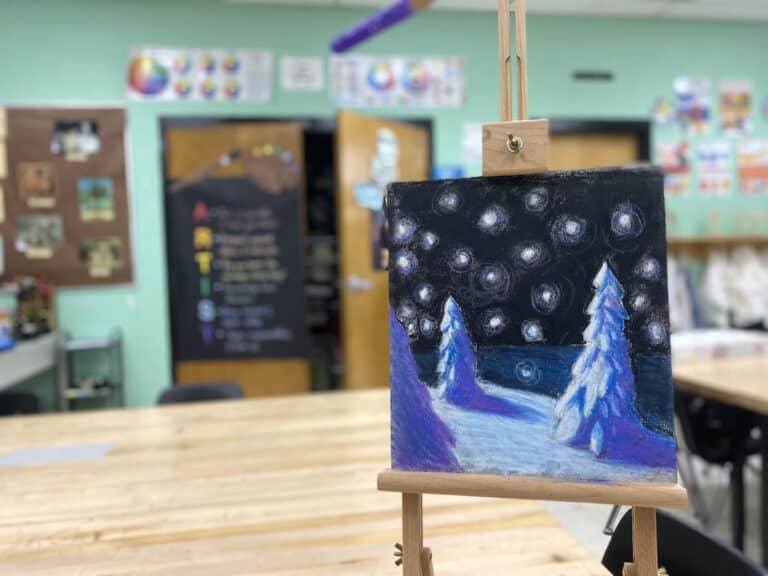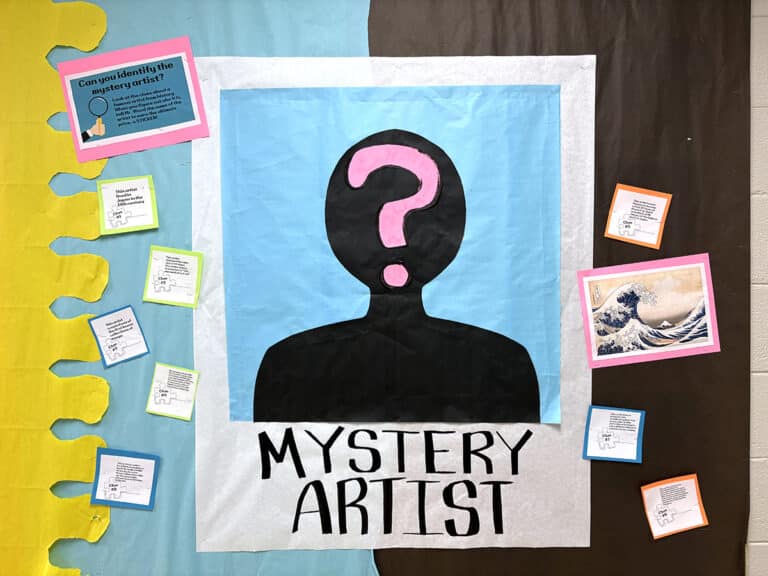The average adult makes 35,000 decisions each day. Teachers likely make even more decisions than this daily! We make choices for ourselves and our students to craft the best art room experience possible. This doesn’t mean that we are choosing for our students, but we are aware of our decisions’ impact on them.
How often have you told your students (or even your own children) to “make good choices”? It seems simple, but determining a standard for “good” is tricky. How do students determine what a “good choice” is? Do students have opportunities to practice making “good” choices? Are we allowing students to be responsible as they make decisions?
Teachers can show students how our choices impact others when we look at the bigger picture. We can model responsible decision-making in the art room through classroom management practices, art routines and procedures, and even artmaking lesson plans.
Let’s take a deeper look at what responsible decision-making is and how papermaking can teach this competency in the art room.
What is responsible decision-making?
The Collaborative for Academic, Social, and Emotional Learning (CASEL) identifies responsible-decision making as a core competency for human development. They define responsible decision-making as “the abilities to make caring and constructive choices about personal behavior and social interactions across diverse situations. This includes the capacities to consider ethical standards and safety concerns, and to evaluate the benefits and consequences of various actions for personal, social, and collective well-being.” The art room is a great place for students to practice responsible decision-making. It is also a safe environment to learn how their actions and reactions affect others.
For more on the SEL competency of responsible decision-making, listen to The Art of SEL, Episode 6: Responsible Decision-Making.
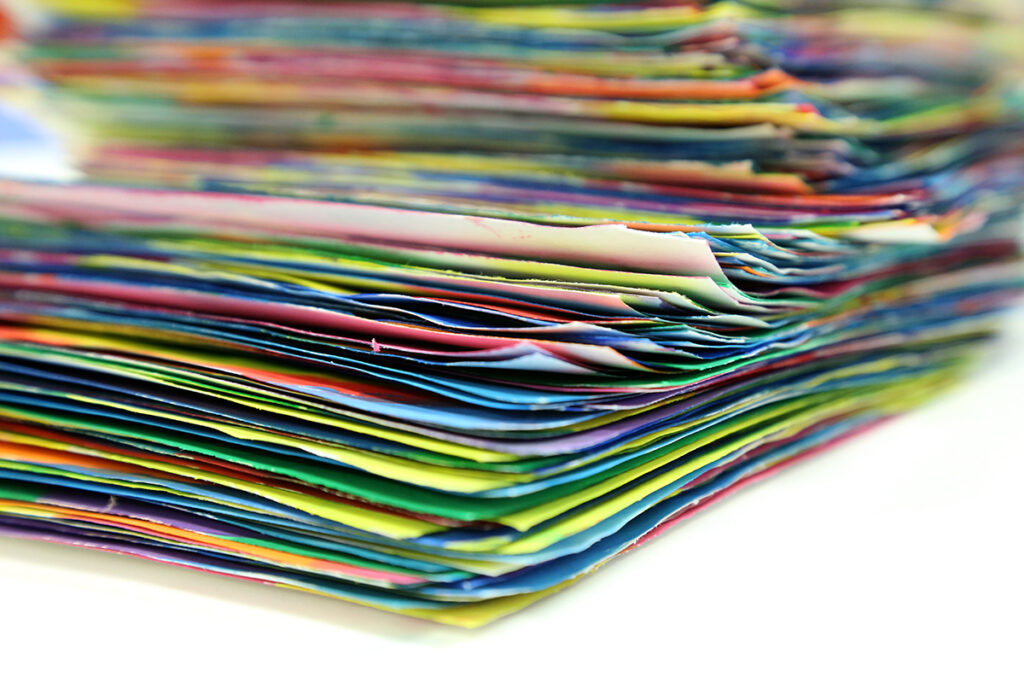
How do we encourage responsible decisions in an environmentally conscious art room?
The art room wouldn’t be an art room without the recycling and upcycling of materials. While some might call us hoarders, we find new ways to repurpose, stretch our budgets, and practice environmental consciousness. However, despite our best efforts, the art room can still create a lot of waste. With hundreds of students coming through our classrooms each day, we can’t avoid it. The good news is that we can put in procedures and model best practices to help create a greener experience.
One way to help students consider the impact their choices have is by limiting supplies. Do you ever limit your students to one piece of paper for their final artwork? Have you ever seen a student throw away a piece of paper after only making a couple of marks? Of course, you have! While a student may feel frustrated when they don’t get another sheet or have to use the front and back of the paper, we need to remind them it is for a good reason. In this situation, you might tell your students how much the paper costs to give them a sense of awareness or note the environmental impact if every student used more than one sheet.
When you discuss how being wasteful impacts the environment, it can urge students to make more responsible choices about using art materials next time.
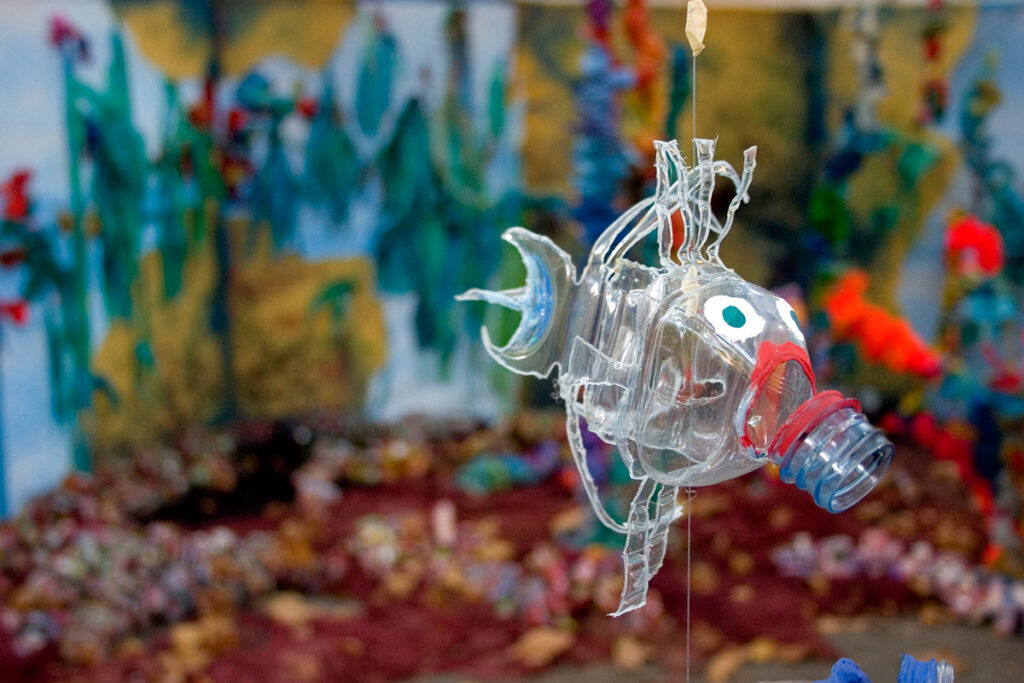
How can routines and procedures impact positive decision-making?
Have you ever been disappointed in a student for not following a classroom procedure or routine? Or, how about the student who is in a hurry, so they don’t put any of their materials away? In these situations, because our students did not make a responsible decision, it affected someone else. The teacher’s time may have been taken away from helping another student or preparing for another class. When modeling our procedures, we also need to explain the importance and rationale behind them. This explanation allows our students to understand how their choices might affect others and the environment, even if they can’t see it at the moment.
No matter how often we go over the scenarios and routines we have in place in the art room and discuss how they help the greater good, we will always have students who don’t follow them. Even though it is frustrating, we must remember that we can’t change students. We can change our own behavior and control our own reactions. We can model the right choice. If a student leaves their supplies out, we can kindly say, “Hey, let’s make sure supplies are put where they need to go, so the next artist can find what they need.”
By helping students understand the reasons behind our procedures and routines, we encourage them to consider the bigger picture. We can help students see the impact they have on the wider world.
How do I bring SEL and papermaking together?
Let’s use the above example of paper waste to examine the competency of responsible decision-making in more depth. Paper is one of the most wasted materials in the art room. Students don’t think twice about plopping it in the recycle bin. While putting paper scraps in the recycling bin is a good first step, do students really know if it’s being recycled? They will never truly know unless they recycle it themselves.
Students can recycle their own paper through papermaking. Perform a little social experiment. Students recycle all of the paper they go through for a week—unwanted artworks, abandoned sketches, discarded worksheets, and more. This can be done with each class or as a whole. Each day, they will see the pile grow. Seeing the pile grow will bring awareness to how much paper students are wasting.
To bring it back to responsible decision-making, discuss the implications on the environment when paper is wasted.
Here are some facts to spark discussion with students:
- Paper accounts for 26% of all landfill waste in the US.
- Manufacturing paper takes twice the energy used to produce a plastic bag.
- The process of manufacturing paper releases chemicals that contribute to air and water pollution.
- To print a Sunday edition of the New York Times requires 75,000 trees.
- Every tree produces enough oxygen for three people to breathe.
Your students will probably be shocked by these statistics! Transition into how they can transform their paper into new paper for future artmaking.
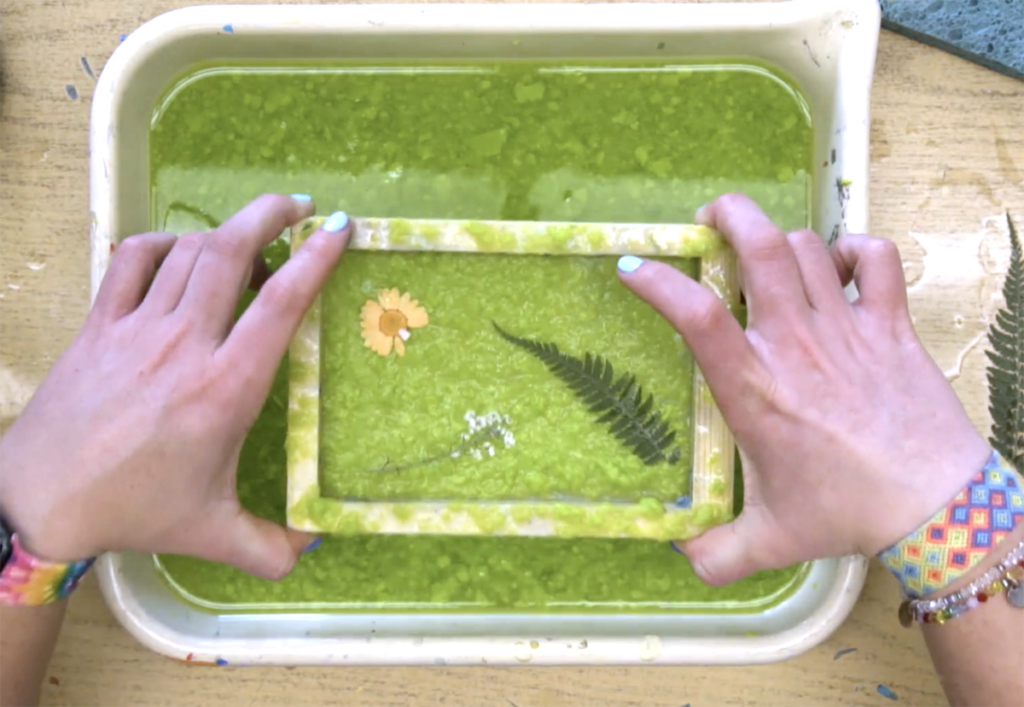
The Basic Steps of Papermaking
If you are new to papermaking or want a refresher, here is a quick rundown of the process:
- Rip up scraps of paper, place them in a bucket, and add water. The ratio should be two parts water and one part paper.
- Soak the paper 10–15 minutes or overnight.
- Transfer the mixture to a blender and blend the paper and water into a pulp.
Optional: Customize the pulp with dried flowers, leaves, dyes, and any other desired materials. - Set up a mould and deckle.
- Set the mould and deckle over a large shallow container to catch the water runoff.
- Pour the paper pulp mixture on top of the screen to strain the pulp.
- Use a spatula to evenly spread and flatten the paper pulp on the screen.
- Remove the deckle once you are satisfied with the shape.
- Flip the screen over onto a towel. On the backside of the screen, use a sponge to blot off excess water.
- Carefully remove the paper from the screen and sponge off additional moisture.
- Allow the paper to dry until there is no remaining moisture. Flip the paper over if you notice warping.
10 Ways to Use Handmade Paper in the Art Room
Now that you have tons of recycled handmade paper, how do you use it? The best thing about making paper with your students is that they get to reap the benefits of the process! The learning and artmaking don’t stop after making the paper. Students can continue to use the paper for other purposes in the art room.
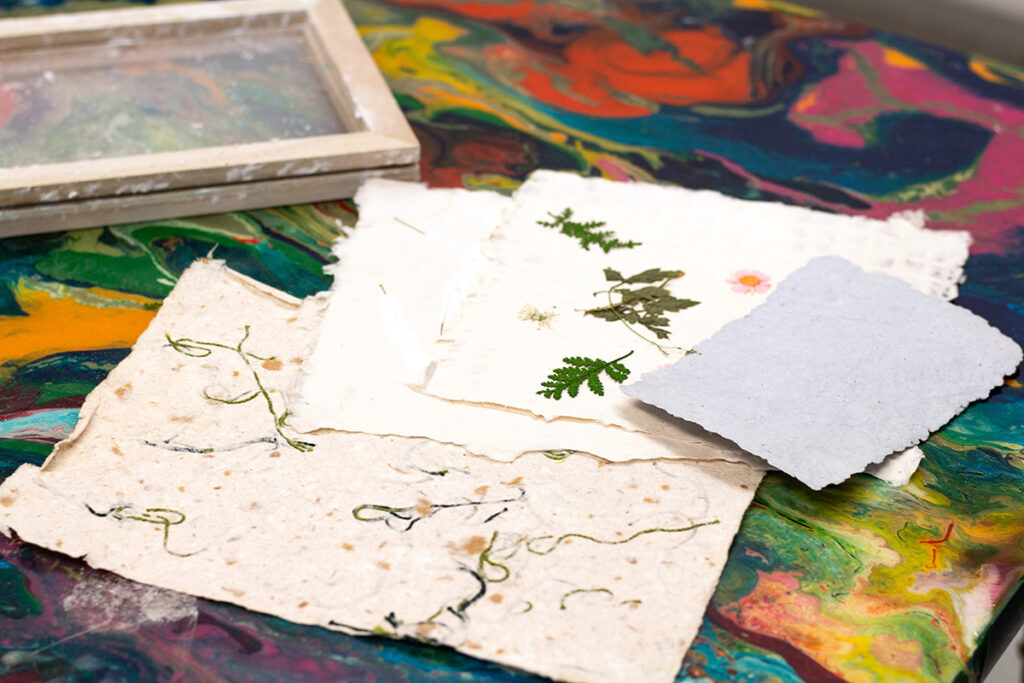
Here are some ideas on how to use handmade paper in future lessons:
- Create stationery sets or cards.
- Papier-mâché it onto a sculpture.
- Cut it into strips and weave it.
- Use it as a surface for printmaking.
- Collage it.
- Prime it with gesso for painting.
- Marble the paper.
- Construct a handbound book.
- Sew it into a paper quilt or wearable art piece.
- Cut it into thin triangles and roll it into paper beads.
Making 35,000 daily decisions is a lot. While not all of these decisions will be responsible, we can do our best to model responsible decision-making for our students. Papermaking is just one of the ways we can model this SEL competency in an art lesson plan. Our hope as art educators is to guide our students to be responsible humans as they continue to make their own decisions. As you map out your scope and sequence for the year, consider this papermaking lesson. You will be able to tie SEL and artmaking together in a memorable learning experience your students will enjoy!
How do you teach responsible decision-making in the art room?
Have you ever made paper with your students?
What are some more lesson ideas that use homemade paper?
Magazine articles and podcasts are opinions of professional education contributors and do not necessarily represent the position of the Art of Education University (AOEU) or its academic offerings. Contributors use terms in the way they are most often talked about in the scope of their educational experiences.

